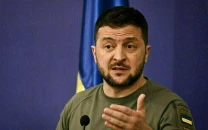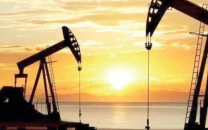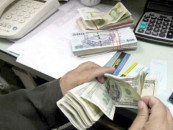Where is Iran's uranium?
.

After President Donald Trump bragged US strikes had "obliterated" Iran's nuclear capabilities, officials cautioned it was still too soon to assess the impact on the country's nuclear programme.
Many questions remain after Sunday's strikes, especially about the whereabouts of Iran's sensitive stockpile of uranium enriched to 60 percent -- a short step from the 90 percent required for a nuclear weapon.
The US attacks, carried out by B-2 stealth bombers, targeted three Iranian nuclear sites: Isfahan and Iran's main enrichment plants in Fordo and Natanz.
While significant damage has been reported, the International Atomic Energy Agency (IAEA) has voiced concern about Iran's stockpile of near-weapons-grade uranium.
Tehran has an estimated 408.6 kilogrammes of uranium enriched to 60 percent, according to the UN nuclear watchdog, whose inspectors last saw that stockpile on June 10.
That material, if further refined, would theoretically be sufficient to produce more than nine nuclear bombs.
IAEA head Rafael Grossi on Monday demanded access to Iran's nuclear sites, saying the agency needs to "account for" the uranium stockpile.
Concerns about the fate of the sensitive stockpile have loomed large. On June 13, the day Israel began its Iran offensive, Iranian Foreign Minister Abbas Araghchi sent a letter to the IAEA, announcing the implementation of "special measures to protect nuclear equipment and material".
Days before the US attacked, satellite imagery showed vehicles near Fordo's entrance.
Prime Minister Benjamin Netanyahu said Israel had "interesting intelligence" on the matter, declining to elaborate.
Israel announced Monday it had carried out strikes to block access routes to Fordo.
"It will be difficult if not impossible to track down all of Iran's 60 percent enriched uranium, stored in small canisters that are easily transportable by car," Kelsey Davenport, an expert with the Arms Control Association, told AFP.
"They (Iranians) no longer have the capacity to turn that stockpile of highly enriched uranium to weapons-grade uranium, and that was really the goal there," US Vice President JD Vance told ABC News.
He added the Trump administration would deal with the uranium "in the coming weeks".
Analysts have been treading carefully when addressing this issue.
Before the attacks, Iran had about 22,000 centrifuges -- the machines used to enrich uranium. Many of them were damaged when Natanz was hit, the IAEA head said.



















COMMENTS
Comments are moderated and generally will be posted if they are on-topic and not abusive.
For more information, please see our Comments FAQ